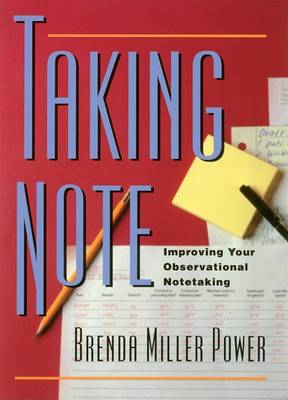Stenhouse in Practice Books
1 total work
Teachers need to be keen observers and notetakers as they assess how students learn.
This practical guide will show readers how to dig their way through the mountain of paperwork before them and how to begin to keep thoughtful records of student learning. In a breezy, down-to-earth style Brenda Power invites you to try new notetaking strategies and shows you how developing this modest skill can help you organize your work and make you more efficient.
In dozens of examples from teachers at all grade levels, Brenda offers helpful suggestions and strategies for everyone from the first-year teacher to the veteran classroom researcher. She takes you step-by-step through the process of examining existing notes, breaking old habits, managing time and materials so observations are possible, and coding notes for later use in assessment and research.
Totally practical, every chapter in Taking Note is packed with ideas and techniques you can use to become a cogent, skillful, and accurate notetaker:
- The Tools of the Trade: Don't get buried in scraps of paper. There are all kinds of inexpensive stationery items that are just right for the job so you start off organized and stay organized.
- When to Write: All about time-finding it, controlling it, and saving some for yourself.
- What to Write: You don't have to write down everything you observe. These hints will help you tell what's important and what's not.
- Bringing It All Together: These case studies show you how two teachers developed their notetaking skills in very different settings.
- From Step-by-Step to a Dance: Try these ideas to set up and finance an inservice program to build a network of expert notetakers.
Taking Note is a boon to any teacher and especially appropriate as a supplement to graduate or inservice courses in alternative assessment and teacher research.
